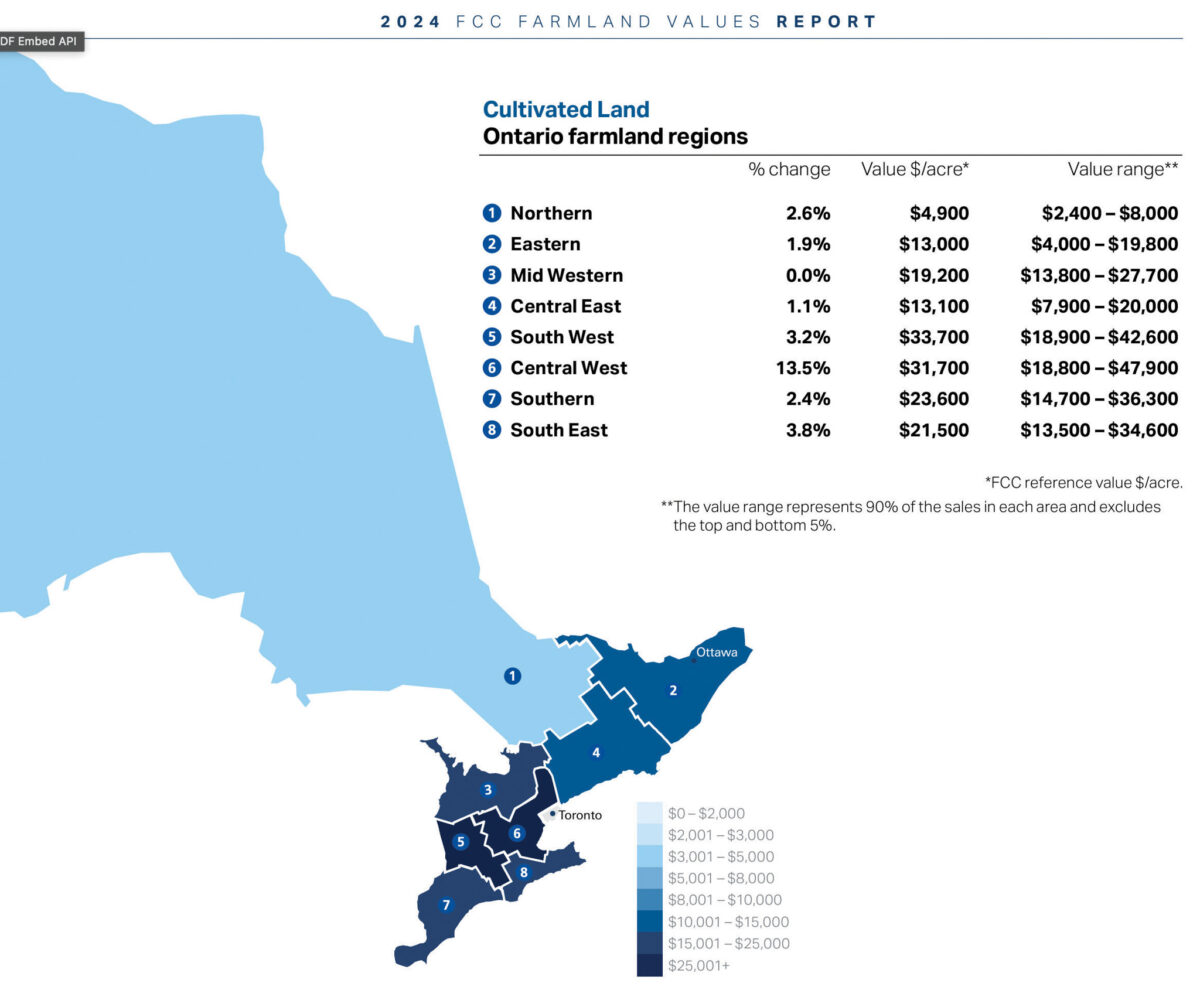The average value of Canadian farmland continued its steady climb in 2024, increasing by 9.3%, slightly less than the 11.5% increase reported in 2023, according to the latest Farm Credit Canada (FCC) Farmland Values Report.
In Ontario, average cultivated farmland values increased by 3.1% in 2024. A reduced rate of growth in cultivated farmland values was observed in all but one of Ontario’s regions. This modest increase followed a 10.7% increase in 2023 and 19.4% in 2022.
“The increase in Canadian farmland values in 2024 reflects an enduring strength in demand for farmland amid some pressures on commodity prices,” said JP Gervais, FCC’s chief economist. “The limited supply of farmland available for sale combined with lower borrowing costs resulted in an increase in the average price of farmland.”

The highest increases were observed in regions with strong agricultural activity and favourable growing conditions. In 2024, Saskatchewan again led with a 13.1% gain in average farmland values and British Columbia recorded growth of 11.3%. All other provinces experienced growth in the single digits: New Brunswick 9%, Quebec 7.7%, Alberta 7.1%, Manitoba 6.5%, Nova Scotia 5.3%, Ontario 3.1%, and Prince Edward Island had the most stable values with an increase of 1.4%. Only three provinces reported higher growth rates in 2024 than 2023: British Columbia, Alberta, and New Brunswick.
There were insufficient publicly reported sales in Newfoundland and Labrador, Northwest Territories, Nunavut, and Yukon to assess farmland values in those regions.
Recent dry conditions across the prairies have led to a robust demand for irrigated land, with interest growing each year. Market availability of irrigated land is very limited.
“With persistent dry conditions, the value of irrigated land continues to rise, reflecting its critical role in boosting production and farm profitability,” said Gervais.
He added that while farmland value appreciation is slowing, farmland affordability relative to farm income continues to deteriorate. This makes it challenging for those aspiring to grow their land base, including young producers, Indigenous peoples, and new entrants.
In 2024, total Canadian principal field crop production is estimated at 94.6 million tonnes, up 2.7% from 2023 and 3.3% above the five-year average. Lower prices for grains, oilseeds, and pulses resulted in an estimated decline in main field crop receipts of 11.8% in 2024.
“The profitability pressures combined with the current uncertainty with regards to trade disruptions create significant headwinds for farm operations looking to invest,” mentioned Gervais.
“Overall, the increase in farmland values is a testament to the strong outlook for the demand of agricultural commodities and the high-quality food produced in Canada,” he added.
FCC has reported a national trend of increasing farmland values for more than 30 years. For more information and insights, visit fcc.ca/Economics.





